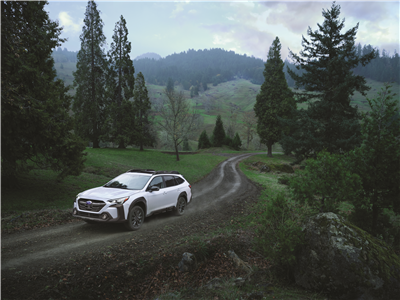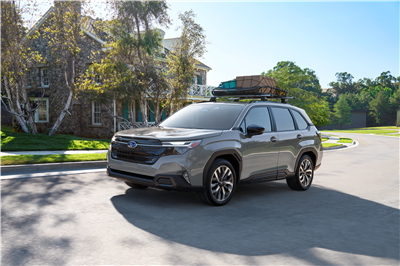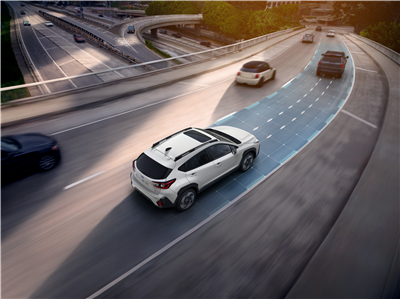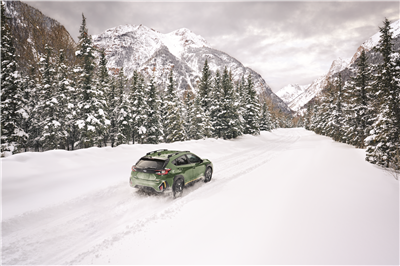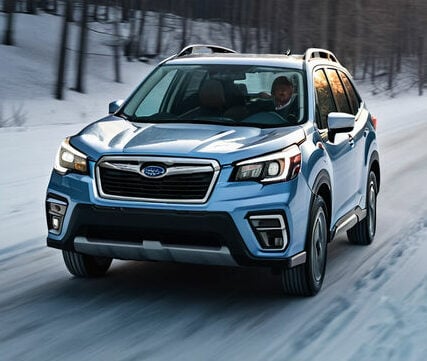Subaru Driving Tips Connecticut Seasons
Connecticut residents know that the weather can change drastically from one day to the next, especially as the seasons transition. Luckily, Subaru vehicles are engineered to handle the diverse driving conditions that each season brings. We spoke with Buddy Blichfeldt, a Subaru driving expert from Quality Subaru in Wallingford, Connecticut, to get his top tips for driving your Subaru safely and confidently year-round in the Nutmeg State.
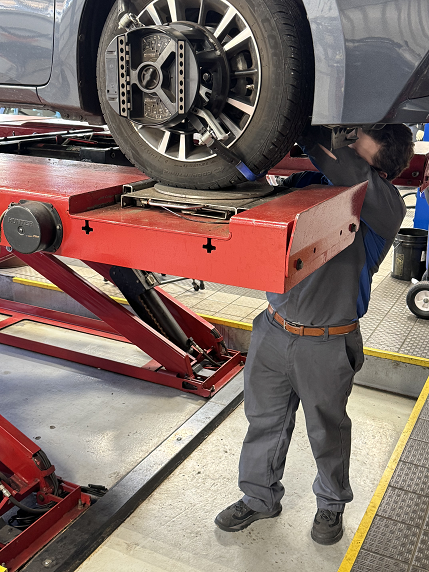
Top 6 Winter Driving Tips
Connecticut winters bring plenty of snow, ice, and slush. To navigate these challenging conditions in your Subaru, Blichfeldt recommends:
- Using winter or snow tires for maximum traction and braking performance. “Snow tires are constructed differently. They have much larger gaps and channels to remove snow within the tire itself. The rubber compound is also much softer to grip the pavement better,” he explains.
- Checking your tire tread depth regularly. Adequate tread is crucial for maintaining traction on slippery roads. Consider replacing your tires when they reach 4/32″ of remaining tread.
- Ensuring your wiper blades and washer fluid are in good condition. “There’s nothing worse than being unprepared,” says Blichfeldt. Replace your wiper blades before winter and keep your washer fluid topped off.
- Testing your battery and electrical system. “Cold weather is hard on batteries, and you should make sure your battery and charging system are at optimum performance,” advises Blichfeldt.
- Changing your oil to a cold weather formulation. This will help your engine run smoothly even on the coldest days.
- Utilizing your Subaru’s symmetrical all-wheel drive (AWD) and X-MODE for maximum control. Subaru’s AWD system continuously powers all four wheels for superior traction. X-MODE, available on select models, optimizes the AWD, transmission, and other systems for even more control on slippery surfaces.
Top 5 Spring Driving Tips
As winter transitions to spring, Blichfeldt suggests:
- Swapping your winter tires for all-season or summer tires. “All of our vehicles have all-season tires. There are some customers that will switch to winter tires specifically meant for snow and winter conditions. If you had snow tires on, now is definitely the time to change them.”
- Checking your tire pressure. “As we come out of winter, tires are going to get over-inflated. You don’t want a tire that’s over-inflated because it’s going to affect how the tire wears and the ride won’t be as comfortable.”
- Inspecting your brakes and fluids. Have your brakes checked and fluids topped off to ensure your Subaru is ready for spring driving.
- Cleaning the air conditioning system and replacing the cabin air filter. This will keep your AC running efficiently and prevent springtime allergens from entering the cabin.
- Replacing dirty engine air filters. Your engine air filter may be clogged with winter road debris like salt and sand, reducing performance.
Top 4 Summer Driving Tips
Blichfeldt notes that summer is a great time to take advantage of your Subaru’s versatility for outdoor adventures. His tips include:
- Considering summer tires for even better handling, braking, and fuel efficiency compared to all-season tires.
- Keeping up with regular maintenance like oil changes and filter replacements. “It’s just keeping everything maintained – keeping your oil changed, keeping your filters changed, just bringing it in so we can make sure everything is the way it’s supposed to be.”
- Having your air conditioning system serviced to ensure it’s working properly in the summer heat.
- Planning ahead for any upcoming service your Subaru may need, like replacing belts, hoses, or the battery. Catching potential issues early can prevent bigger problems down the road.
Top 4 Fall Driving Tips
As the leaves start to change, Blichfeldt advises:
- Checking your tire tread depth and rotating your tires. “I can’t stress enough changing your vehicle tires before they get to where they’re just not safe. I would recommend that when you get to even 4/32″ of tread depth, get new tires. That’s everything between your vehicle and the road.”
- Topping up fluids like antifreeze and wiper fluid in preparation for winter.
- Testing your battery and electrical system to make sure they’re ready for colder temperatures.
- Preparing for changing weather and road conditions. Be especially cautious on leaf-covered roads, as they can be slippery, and watch out for frost and black ice on cold mornings.
The Importance of Regular Maintenance
No matter the season, Blichfeldt emphasizes the importance of routine service at your local Subaru dealer. “Don’t be a stranger in the service department. Bring your vehicle in regularly – at least at a minimum twice a year, every six months, because that’s when you’re going to need your engine oil changed at least.”
At Quality Subaru, their factory-trained technicians perform thorough multi-point inspections to catch any potential issues. “We’re going to see that little leak, whether it’s an oil leak or a coolant leak, that needs to be addressed. While we address it while it’s just a leak, it’s fine. But when it gets to the point where fluids have escaped and now you’re low on fluid, you can suffer some real internal engine damage.”
Conclusion
With their symmetrical all-wheel drive, high ground clearance, and advanced safety features, Subarus are well-equipped to handle Connecticut’s diverse weather and road conditions in every season. As Blichfeldt noted, “Subarus are really, really meant for New England.” By following these expert tips from Buddy Blichfeldt and staying on top of regular maintenance at your Subaru dealer, you can drive with confidence all year long, whether you’re commuting in a snowstorm or embarking on a summer road trip.
FAQ
Are Subaru’s good in the snow?
Yes, Subaru’s excel in snowy and icy conditions thanks to their standard symmetrical all-wheel drive system, which continuously powers all four wheels for optimal traction and control.
How often should I have my Subaru serviced?
It’s recommended to have your Subaru serviced at least twice a year, or every six months, to keep it running safely and reliably. Drivers who put on a lot of miles may need more frequent service.
When should I switch to winter tires?
If you use dedicated winter tires, the best time to put them on is before the first snow falls or when temperatures consistently drop below 45°F. Don’t wait until you’re caught unprepared in a snowstorm.
What should I do to get my Subaru ready for spring?
After winter, have your brakes, fluids, and air conditioning system inspected. If you used winter tires, switch them out for all-season or summer tires. It’s also a good idea to replace your wiper blades and cabin air filter.
How do I know when my tires need to be replaced?
Check your tire tread depth regularly. Blichfeldt advises replacing your tires when they reach 4/32″ of remaining tread, even though the legal minimum is 2/32″. Tires are critical for safe handling and braking, especially on wet or slippery roads.



